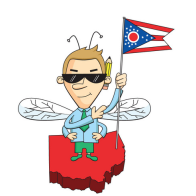Getting Real About Rural America




Things clump together; the periphery cannot hold.
As you read this, Democratic presidential hopefuls are crisscrossing Iowa, trying to assure farmers that they share their concerns. Commentators are publishing opinion pieces about how Democrats can win back rural voters. Think tanks are issuing manifestoes about reviving heartland economies.
There’s nothing wrong with discussing these issues. Rural lives matter — we’re all Americans, and deserve to share in the nation’s wealth. Rural votes matter even more; like it or not, our political system gives hugely disproportionate weight to less populous states, which are also generally states with relatively rural populations.
But it’s also important to get real. There are powerful forces behind the relative and in some cases absolute economic decline of rural America — and the truth is that nobody knows how to reverse those forces.
Put it this way: Many of the problems facing America have easy technical solutions; all we lack is the political will. Every other advanced country provides universal health care. Affordable child care is within easy reach. Rebuilding our fraying infrastructure would be expensive, but we can afford it — and it might well pay for itself.
But reviving declining regions is really hard. Many countries have tried, but it’s difficult to find any convincing success stories.
Southern Italy remains backward after generations of effort. Despite vast sums spent on reconstruction, the former East Germany is still depressed three decades after the fall of the Berlin Wall.
Maybe we could do better, but history is not on our side.
What’s the matter with rural America? Major urban centers have always been magnets for economic growth. They offer large markets, ready availability of specialized suppliers, large pools of workers with specialized skills, and the invisible exchange of information that comes from face-to-face contact. As the Victorian economist Alfred Marshall put it, “The mysteries of the trade become no mysteries; but are as it were in the air.”
But the gravitational pull of big cities used to be counteracted by the need to locate farming where the good land was. In 1950 U.S. agriculture directly employed more than six million people; these farmers supported a network of small towns providing local services, and some of these small towns served as seeds around which various specialized industries grew.
Nor was farming the only activity giving people a reason to live far from major metropolitan areas. There were, for example, almost half a million coal miners.
Even then, rural areas and small towns weren’t the “real America,” somehow morally superior to the rest of us. But they were a major part of the demographic, social and cultural landscape.
Since then, however, while America’s population has doubled, the number of farmers has fallen by two-thirds. There are only around 50,000 coal miners. The incentives for business to locate far from the metropolitan action have greatly diminished. And the people still living in rural areas increasingly feel left behind.
Some of the consequences have been tragic. Not that long ago we used to think of social collapse as an inner-city problem. Nowadays phenomena like the prevalence of jobless men in their prime working years, or worse yet, the surge in “deaths of despair” by drugs, alcohol or suicide are concentrated in declining rural areas.
And politically, rural America is increasingly a world apart. For example, overall U.S. public opinion is increasingly positive toward immigrants. But rural Americans — many of whom rarely encounter immigrants in their daily lives — have a vastly more negative view.
Not surprisingly, rural America is also pretty much the only place where Donald Trump remains popular; despite the damage his trade wars have done to the farm economy, his net approval is vastly higher in rural areas than it is in the rest of the country.
So what can be done to help rural America? We can and should make sure that all Americans have good health care, access to good education, and so on wherever they live. We can try to promote economic development in lagging regions with public investment, employment subsidies and, possibly, job guarantees.
But as I said, experience abroad isn’t encouraging. West Germany invested $1.7 trillion in an attempt to revive the former East Germany — more than $100,000 per capita — yet the region is still lagging, with many young people leaving.
Nor, realistically, can we expect aid to produce a political turnaround. Despite all that aid, in 2017 more than a quarter of East German men cast their ballots for the extreme-right, white nationalist Alternative for Germany.
I’m sure that some rural readers will be angered by everything I’ve just said, seeing it as typical big-city condescension. But that’s neither my intention nor the point. I’m simply trying to get real. We can’t help rural America without understanding that the role it used to play in our nation is being undermined by powerful economic forces that nobody knows how to stop.
Politically, rural America is increasingly a world apart. Maddie McGarvey for The New York Times



Their isolation is a huge part of it. I live in a rural area, but we're 90 minutes from 2 major cities (and airports). I commute, as do many others, so we have job opportunities that just aren't available locally. We have access to 2 big city newspapers as well as local newspapers. There are very few people who have never been out of the county, as is the case in more remote areas of my state. While we do have heroin issues as most places do, we haven't gotten sucked into the meth epidemic.
Our population isn't as racially diverse as that in a city, but it's far more diverse than in more remote rural areas. My friends are engineers, teachers, house painters, artists, IT specialists, butchers, lawyers, doctors, farmers, carpenters, bartenders, tree cutters, river guides, waitresses, and some people who don't seem to want to work at all. Many people have come from other areas, and others have been in the area for many generations. We're exposed to a lot more things and different ideas. When you're totally isolated, it's much easier to fear that which you've never been exposed to, to resist change, to remain ignorant of the way others live, and to remain stagnant - and that inability for the face-to-face contact and the invisible information exchange is also a factor.
I wish I knew what the answer was, if there even is an answer. There's no good way to remove this isolation in many cases, so that there are better job opportunities and less stagnation.
... and that's the real worry. That there is no answer.
There is nothing keeping the kids in rural towns. Use to be we could put a factory in a small town of 3000-5000 people and compete at least within our own shores. Today with global competition, that plan with a profit margin is far from assured. It's not the people, it's the competition they face.
And what "regular-Joe's" don't understand is that it is they themselves helped to bring about this situation. Why buy four poly-styrene glasses made by some other American worker, when I can have eight polyethylene glasses made in China for a third of the price. Mom & Pop shops gave way to Walmart's who are now determining what the level of quality someone can buy. Simply a race to the bottom.
rural America — and the truth is that nobody knows how to reverse those forces.
I have family and friends still waiting 40 years later for the answer. I figured out long ago cornfields and baseball fields do not a thriving economy make. DUuu
We all live by the choices we make. Live and work in the sticks you're probably going to have a tougher time of it, your choice, not one I was willing to live with.
My father grew up in rural Oklahoma during the depression and dust bowl years. He always said that Oklahoma was a good place to be "from". He left, in the late 1930s and never looked back.
My dad grew up on a farm in South Dakota... and left...
What part of SD?
Southeast. I was born in Sioux Falls.
Dad's from the middle-East - Milbank/Twin Brooks.
My folks moved to Baltimore when I was little, so my memories of SD are of vacations with my mother's folks in Beresford. I spent a summer in Rapid City while I was in high school.